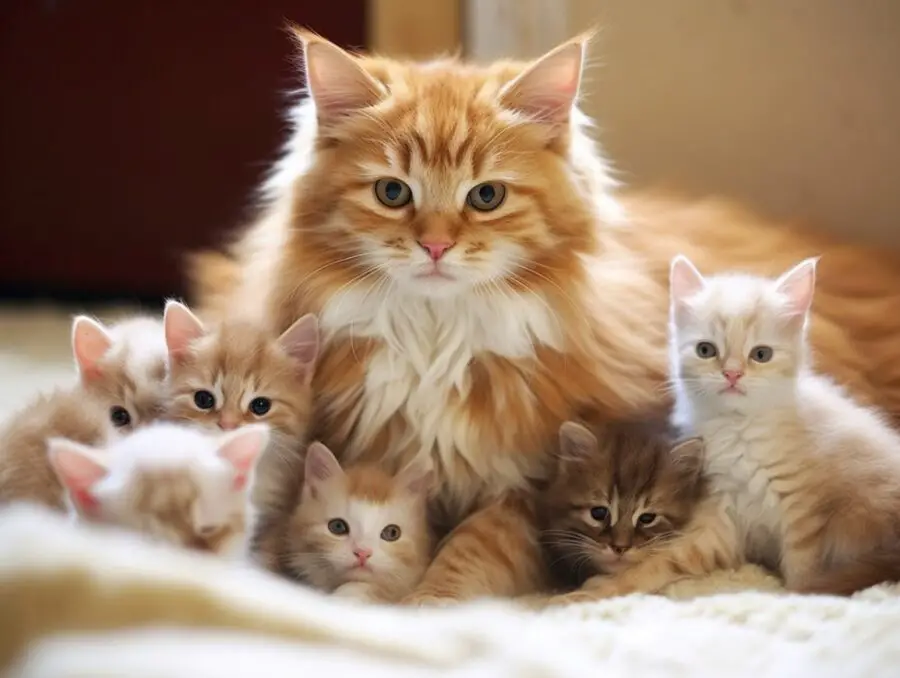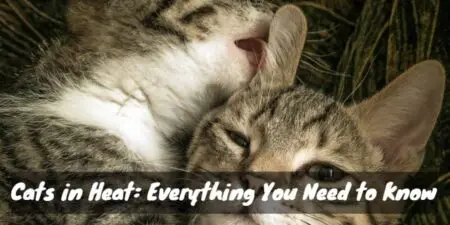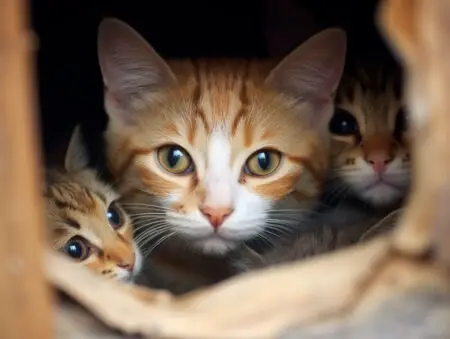Inducing labor in cats can be a delicate and sometimes necessary process, but it’s important to understand the reasons and steps to ensure the safety of both the mother cat and her kittens. In this guide, we’ll discuss various approaches to inducing labor in cats, as well as when it’s appropriate to do so.
Understanding the Need for Induction
Before attempting to induce labor in a cat, it’s important to recognize the signs that a cat is experiencing difficulties during her pregnancy. A few indicators include her pregnancy lasting longer than 69 days, the presence of a greenish vaginal discharge without the birth of kittens, and the mother appearing to be in pain or distress. In these cases, it is important to consult with a veterinarian who can provide proper guidance and advice.
Methods of Induction
There are several methods to induce labor in cats, but it’s essential to note that these should only be attempted under the supervision of a veterinarian. Common methods include:
- Oxytocin injections: This hormone can help stimulate contractions and initiate labor. However, it must be administered by a veterinarian, as incorrect dosages can be harmful to the mother and her kittens.
- Calcium and glucose supplementation: In some cases, providing the mother with additional calcium and glucose can help strengthen contractions and promote labor.
- Manual stimulation: Gently massaging the mother’s abdomen can sometimes help encourage labor contractions. This should be done cautiously and with the guidance of a veterinarian.
Monitoring the Labor Process
Once labor has been induced, it is important to carefully monitor the mother cat’s progress. Keep a close eye on her contractions, and watch for signs that the kittens are being delivered. If a kitten becomes stuck during delivery or the mother is struggling, contact your veterinarian immediately for assistance.
Caring for the Mother Cat and Her Kittens
After the labor process is complete, it’s crucial to ensure the mother cat and her kittens are healthy and well-cared for. Provide a warm, comfortable space for the new family, and keep an eye on them to ensure they are bonding properly. The mother should be able to clean and feed her kittens, and it’s important to make sure that all the kittens are nursing regularly.
Post-Labor Veterinary Care
Following the delivery, it’s a good idea to schedule a veterinary appointment to ensure the health and well-being of both the mother cat and her kittens. The veterinarian will examine the mother and kittens, checking for any issues or complications that may have arisen during the labor process. They can also provide guidance on proper care and feeding for the new family.
Preventing Future Pregnancy Complications
One way to prevent the need for inducing labor in cats is to have them spayed, which eliminates the risk of future pregnancies. Additionally, keep your cat indoors to avoid exposure to potential mates, and make sure she receives routine veterinary care to ensure her overall health and well-being.
Conclusion
Inducing labor in cats should always be done under the guidance and supervision of a veterinarian. Understanding the reasons, methods, and precautions involved in the process can help ensure the safety and well-being of both the mother cat and her kittens. With proper care and monitoring, the labor and delivery process can be a smooth and joyful experience for both the feline family and their human caretakers.
"In ancient times cats were worshipped as gods; they have not forgotten this."
-- Terry Pratchett





